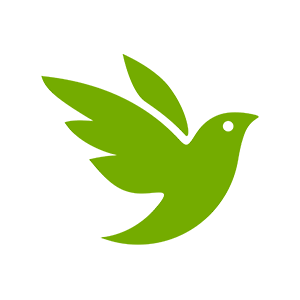Get into pollinator week by joining our gardening project! / Prenez part à la Semaine des pollinisateurs en vous joignant au projet de jardinage pour la faune!
It’s National Pollinator Week from June 21st to June 27th! Canada has over 1,000 native pollinators including bees, butterflies, hummingbirds, beetles, flies, ants and more. Did you know there are no native honeybee species in Canada? You can learn more about our pollinators here.
We’re asking everyone to keep an eye out for pollinators this week and upload your sightings to iNaturalist. The Canadian Wildlife Federation (CWF) has a new iNaturalist project you can join called CWF’s Gardening for Wildlife which highlights wildlife that visits your garden – balconies, backyards, farmland and more are welcome! You can also upload your garden plants – just be sure to click the ‘captive / cultivated’ box when you upload the observation. Planting native flowers is one of the easiest ways to protect pollinators and bring nature into our lives. We want to showcase those of you who are conserving habitat as well as spread the word about how gardening for wildlife can help our native species.
Du 21 au 27 juin, c’est la Semaine nationale des pollinisateurs! Il y a plus de 1000 espèces pollinisatrices indigènes au Canada : abeilles, papillons, colibris, coléoptères, mouches, fourmis et plusieurs autres. Mais saviez-vous qu’aucune espèce d’abeille mellifère n’est indigène au Canada? Cliquez ici pour en savoir plus sur nos pollinisateurs.
Nous demandons à tout le monde d’être particulièrement attentifs aux pollinisateurs cette semaine et de téléverser vos observations sur iNaturalist. La Fédération canadienne de la faune (FCF) a lancé un nouveau projet intitulé Jardinage pour la faune de la FCF auquel nous vous invitons à vous joindre. Ce projet met en vedette la faune qui visite votre jardin : sur votre balcon, dans votre cour, sur une terre agricole ou autre! Vous pouvez également y télécharger des photos des plantes de votre jardin, mais assurez-vous de cocher la case « en captivité/cultivé » quand vous enregistrez l’observation. En fait, planter des fleurs indigènes est l’une des façons les plus simples de protéger les pollinisateurs et d’ajouter un brin de nature à nos vies. Nous voulons mettre en lumière les gens comme vous qui conservent les habitats et qui font passer le mot que jardiner pour la faune, c’est super bénéfique à nos espèces indigènes.



Comments
I'm curious about whether my moth observations would be eligible for the CWF Gardening for Wildlife project. I have a porch on the back of my house where I have a light that attracts moths. My home is on about 2 acres of woodland and I have 12 raised garden beds and 4 perennial beds, including a lot of native species. I get a lot of interesting insects in my yard, but a lot of my moth photographs are in my back porch area on the wall or screen near the light. I believe I get a lot of moth species because of the diversity of plants in my yard, but I'm not sure if the pictures of the moths have to be on garden plants to qualify for this project. Can anyone clarify? Thanks!
@scotiaspinner it sounds like you have created a wonderful habitat for wildlife! You can absolutely add the photos of moths on your porch to the gardening project. They are visiting your property and that qualifies them for the project.
Add a Comment